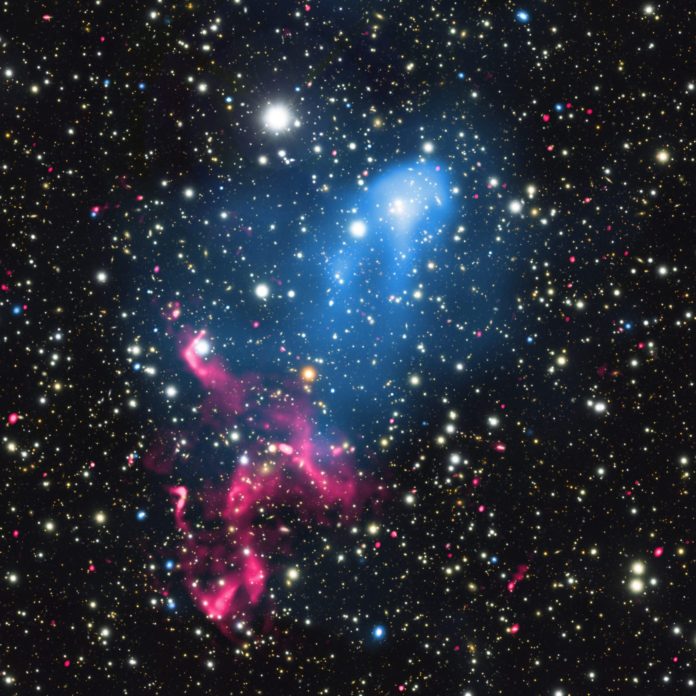Black holes have been extensively covered and studied over the past few decades with theory upon theory being stacked on one another, adding to the baffling enigma of this phenomena. While basic principles have been established about a black hole, nothing conclusive has been proposed about the exact nature and the science that exists behind the dark depths of this mysterious occurrence.
Owing to the existence of sophisticated technology and a culmination of brilliant and intuitive minds yearning to piece together this cosmic mystery, black holes are widely monitored with everything about them being recorded, studied and documented. With every microscopic aspect analyzed and a rough pattern established, astronomers were taken aback by the recent behaviour of a black hole very close to home – our very own Sagittarius A*. Astronomers have spotted strange, unexplained flashes coming out of our black hole.

This monster black hole estimated to be four million times the mass of our gargantuan sun has been sending out unusual blasts of radiations reported to be more powerful than anything witnessed before. Scientists have caught it growing seventy-five times brighter and subsiding, which is fairly unusual considering the pacific nature of this black hole. This strange occurrence raises an array of possibilities and theories with some backing on logic and others, quite perplexing in their explanation.
The immediate explanation suggests that the black hole has become more active and has begun coalescing more material or materials of a different kind. This still raises the very obvious question, why now? Why has the black hole changed an otherwise established pattern? If you thought this impenetrable phenomenon couldn’t get more puzzling, some scientists believe that our entire understanding of a black hole could be wrong, proposing the need for a new model.

The more logical explanations suggest that the flash was thrown out when the star known as S0-2 moved close to the black hole, in 2018. This star had been under research for a while in an attempt to gather more insight on Einstein’s theory of general relativity but seems to have unravelled a greater mystery in need of understanding. Astronomer Tuan Do from the University of California, Los Angeles stated in an interview, “I was pretty surprised at first and then very excited. The black hole was so bright I at first mistook it for the star S0-2, because I had never seen Sag A* that bright. Over the next few frames, though, it was clear the source was variable and had to be the black hole. I knew almost right away there was probably something interesting going on with the black hole.”
When asked about the possible time frame during which the fluctuation occurred, Do had a rather interesting reply. He tweeted saying “Depending on your point of view, this happened either on 13 May 2019 UT or 26,000 years ago.” He and his team documented this event when they were using the WM Keck Observatory in Hawaii and managed to take a time-lapse of two hours.
Conversely, scientists believe that the recent occurrence could be a result of the remnants of the passage of a dusty object known as G2 known to have passed in 2014. During its time of appearance, scientists had speculated a brilliant show marked by a stunning display. Their grandiloquent expectations, however, were dampened by the result. They now put forth the possibility that the show simply might have been delayed rather than cancelled.
Let us understand the reason behind the exciting but rather frightening nature of this discovery. Our black hole, Sagittarius A*, is not known to typically show such oscillating behaviour over long periods of time, let alone a mere couple of days. Statistically, the chance of seeing one night with this kind of radiation is a low 0.3 per cent. What’s more, the probability of seeing unusual activity over four nights, as the researchers did, is even lower at 0.05 per cent.

With probabilities lying so low and a statistic pattern established, what made the black hole flare up now? Is the explanation as modest as proposed or does this event mark another avenue waiting to be detangled, which could potentially change everything we consider ourselves to know about a black hole forever?
For the time being, all we can do is let our imaginations run wild and wait for someone out there to jump in their seats with a eureka moment presenting a solution finally demystifying this bizarre puzzle. Who knows, it could very well be one among us. Until then, Netflix sure does have more enthralling content added to their list of ideas to explore.
For more updates, click here!


